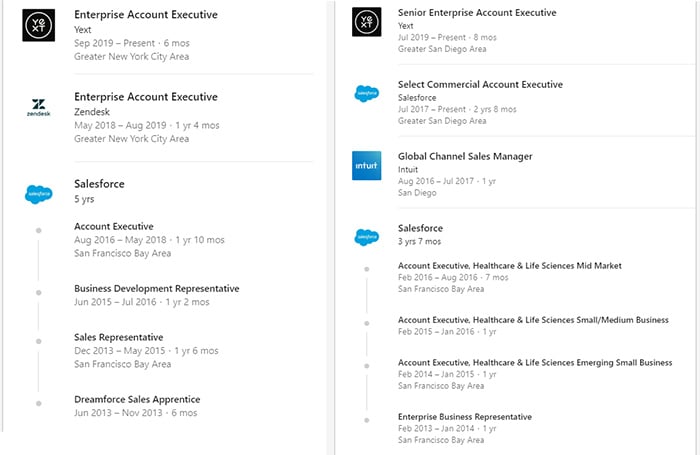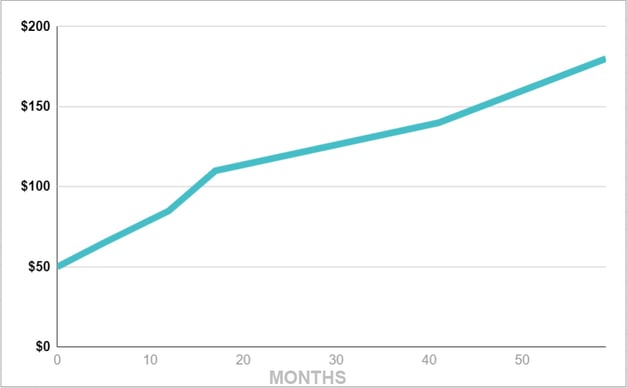I like to spend time on the r/Sales sub over on Reddit. It gives an unfiltered and anonymous perspective on what future, current, and past SDRs are asking and advising.
Questions around compensation and timing of the Entry-level SDR to Enterprise AE path are common. So I reviewed 236 LinkedIn profiles of current Enterprise Account Executives that also contained a stint in Sales Development.
What does the path look like?
There are as many paths to an Enterprise AE role as they are routes into Sales itself. Let’s be honest, very few kindergartners express a desire to carry an enterprise bag someday. I noted many profiles dipped in and out of the straight line career path. This includes stints as:
- SDR Team Leads
- Channel Sales Reps
- VP/Director of Sales
That being said, the most common career path looks more or less like this:
Inbound SDR → Outbound SDR → Senior SDR → Associate AE → Commercial AE → Enterprise AE
Here are two examples that coincidentally share common start and at-present locations.

What does the comp look like?
A friend at a high-growth SaaS company was kind enough to share their internal compensation and rough(!) timing matrix with me.

- Inbound SDR
$35K / $50K OTE
5 months
- Outbound SDR
$45K / $65K OTE
7 months
- Senior SDR
$55K / $85K OTE
5 months
- Associate AE
$55K / $110K OTE
24 months
- Commercial AE
$70K / $140K OTE
18 months
- Enterprise AE
$90K / $180K OTE
That’s 3.5X’ing your OTE in roughly 5 years--putting you in the top 5% of the US individual income distribution. Not bad work if you can get it.
How long does it really take?
The reality is that the overwhelming majority of Enterprise AEs don’t make that full journey within a single company. Only 9% of my sample ran the table from Entry-level SDR to enterprise AE at the same company. The findings show:
- Median time since first SDR role: 6.25 years
- Median # of companies they’ve worked at: 3 companies
- Median # of steps along the way: 6 roles
Said another way, the median journey takes 6.25 years, 6 different roles, and typically 3 different companies.
I also compared the fastest SDR-to-Ent AE quartile to the slowest. The fastest quartile made the progression in half the time with fewer steps at fewer companies.
|
FASTEST QUARTILE |
SLOWEST |
|
|
YEARS |
4.5 |
9.0 |
|
COMPANIES |
2.0 |
4.0 |
|
STEPS |
5.5 |
7.0 |
Each additional company switch adds nearly 8 months to the timeline from SDR to Enterprise AE.
Where do we go from here?
I don’t have an easy answer. Telling SDRs to “just stay heads down” and “keeping paying their dues” is unhelpful—and often poorly received—advice.
Yet, there’s some truth to it.
For many SDRs, 6.25 years is more than 1/4th of the time they’ve been on this earth. And the grass is always greener (plus the comp is definitely greener) on the AE side of the fence.
For many companies, building a formal career path feels burdensome. And sticking to timelines and promotion criteria is challenging.
But if we want less attrition, longer tenure, and (mostly importantly) a positive impact on people’s careers, we have to do the heavy lifting. That means hiring reps willing to put in the time and building a career path with real steps and criteria for them.
